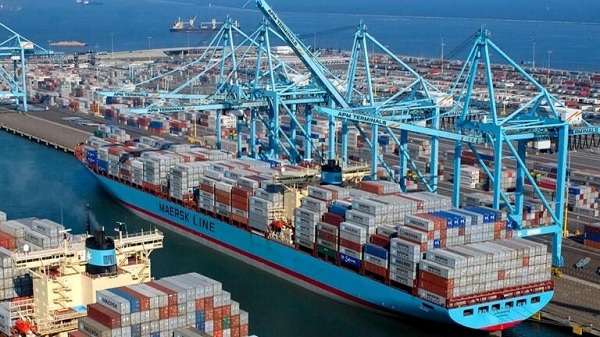
Ethiopia has long grappled with the challenge of lacking direct access to the sea. This geographic constraint has far-reaching implications for its economy, geopolitics, and national development. Since recently, Ethiopia has been engaged in a multifaceted quest to mitigate the consequences of its landlocked status and secure alternative avenues for maritime trade. This pursuit is deeply intertwined with regional politics, infrastructure development, and international partnerships.
Ethiopia’s dependence on Djibouti has fostered a unique relationship between the two countries, characterized by economic interdependence and infrastructure collaboration. Ethiopia has invested heavily in transportation networks, such as the Ethiopia-Djibouti Railway, a modern electrified rail line designed to facilitate efficient cargo movement between Addis Ababa and Djibouti’s ports. This railway, completed in 2018, is a testament to Ethiopia’s determination to secure reliable trade routes. Additionally, Ethiopia has engaged in agreements with Djibouti to manage joint logistics facilities and develop industrial parks near the ports, further integrating the two nations’ economies.
While Djibouti remains Ethiopia’s primary outlet to the sea, Addis Ababa has explored alternative routes to diversify its access and reduce over-reliance on a single partner. One notable example is Ethiopia’s burgeoning partnership with Sudan. The Port of Sudan, situated along the Red Sea, offers a potential alternative for Ethiopian trade. To this end, Ethiopia has signed agreements with Sudan to improve road and rail connectivity and facilitate the smooth movement of goods. However, political instability in Sudan, including ongoing internal conflicts and leadership changes, has limited the effectiveness of this route.
The country has also turned its attention to regional initiatives aimed at enhancing collective economic integration. The African Continental Free Trade Area (AfCFTA), for instance, presents an opportunity for Ethiopia to collaborate with neighboring countries in developing transnational infrastructure and reducing trade barriers. By leveraging regional frameworks, Ethiopia seeks not only to improve its own access to the sea but also to contribute to broader economic growth and stability in the Horn of Africa.
The quest for sea access is not merely a logistical challenge but also a matter of economic sovereignty and strategic autonomy. Ethiopia, with its population of over 120 million people, is one of Africa’s fastest-growing economies. The lack of direct sea access has inflated transportation costs, hindered export competitiveness, and complicated the importation of essential goods. To counter these challenges, Ethiopia has prioritized infrastructure development; including road networks, dry ports, and logistics hubs. These investments aim to streamline trade processes and reduce dependency on external actors.
In recent years, Ethiopia has sought to acquire stakes in foreign ports to secure guaranteed access and influence over maritime operations. This strategy aligns with the broader trend of landlocked countries investing in coastal infrastructure to overcome geographic disadvantages. For example, Ethiopia has purchased shares in Djibouti’s port facilities and signed agreements to invest in Lamu Port in Kenya. These investments reflect Ethiopia’s proactive approach to securing long-term solutions to its sea access dilemma.
The diplomatic dimension of Ethiopia’s quest for sea access cannot be understated. Regional politics in the Horn of Africa are often shaped by competing interests, historical grievances, and overlapping territorial claims. Ethiopia’s relationships with its neighbors—particularly Eritrea, Somalia, Djibouti, and Sudan—are critical in determining the success of its maritime ambitions.
In addition to regional partnerships, Ethiopia has engaged with international actors to support its sea access initiatives. Major global powers, including China, the United States, and the European Union, have vested interests in the stability and economic development of the Horn of Africa. China, in particular, has played a significant role through its Belt and Road Initiative, funding key infrastructure projects such as the Ethiopia-Djibouti Railway and road networks. These collaborations underscore the geopolitical significance of Ethiopia’s quest for sea access, as it intersects with global strategic interests in one of the world’s most vital maritime corridors.
Despite its efforts, Ethiopia faces numerous challenges in its pursuit of maritime access. Political instability and conflict in the Horn of Africa often disrupt regional cooperation and infrastructure projects. Furthermore, Ethiopia’s ambitious infrastructure projects require substantial financial resources, which pose a burden on the national budget and increase external debt levels.
Environmental factors also play a role in Ethiopia’s quest for sea access. Climate change and ecological degradation are reshaping the economic landscape of the Horn of Africa, affecting agricultural production, water resources, and transportation infrastructure. Rising sea levels and extreme weather events threaten coastal facilities, while desertification and drought impact inland connectivity. Addressing these challenges requires a holistic approach that integrates environmental sustainability into infrastructure planning and regional cooperation.
Ethiopia’s pursuit of sea access has implications beyond its borders, influencing the broader dynamics of the Horn of Africa. The region’s stability and economic development depend on fostering cooperative relationships among neighboring countries. Initiatives such as the Intergovernmental Authority on Development (IGAD) provide a platform for dialogue and collaboration on shared challenges, including trade facilitation, infrastructure development, and conflict resolution. By engaging in regional mechanisms, Ethiopia can contribute to building a more integrated and prosperous Horn of Africa.
The question of Ethiopia’s sea access is also deeply rooted in its historical identity and national aspirations. As one of the oldest nations in the world, Ethiopia has a rich heritage of resilience and self-reliance. The loss of its coastline in 1993 was not only a geographic setback but also a symbolic challenge to its sovereignty. The country’s ongoing efforts to regain access to the sea reflect its determination to assert its place in the global economy and uphold its legacy as a leading nation in Africa.
Looking to the future, Ethiopia’s quest for sea access will likely continue to evolve in response to changing regional and global dynamics. The rise of new technologies, such as digital trade platforms and renewable energy infrastructure, offers opportunities to enhance trade efficiency and reduce environmental impacts. Moreover, the continued expansion of regional trade blocs and economic corridors could provide Ethiopia with additional avenues to address its landlocked status.
Ultimately, Ethiopia’s sea access quest is a multifaceted challenge that requires a comprehensive and coordinated approach. By balancing investments in infrastructure, fostering regional partnerships, and engaging with international stakeholders, Ethiopia can navigate the complexities of its geographic constraints and unlock new opportunities for growth and development. The nation’s resilience and strategic vision will be critical in shaping its path forward, ensuring that it remains a vital player in the interconnected world of global trade and geopolitics.
BY STAFF REPORTER
THE ETHIOPIAN HERALD THURSDAY 2 JANUARY 2025





